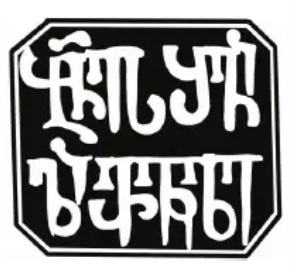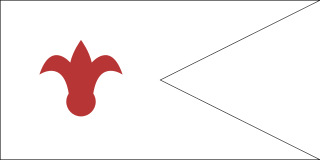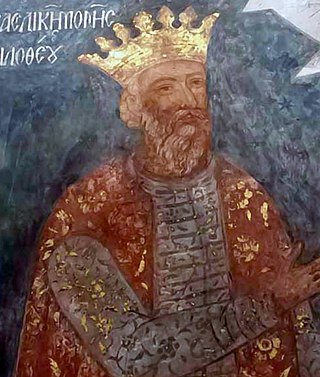
The Kingdom of Kartli-Kakheti was created in 1762 by the unification of the two eastern Georgian kingdoms of Kartli and Kakheti. From the early 16th century, according to the 1555 Peace of Amasya, these two kingdoms were under Iranian control. In 1744, Nader Shah granted the kingship of Kartli to Teimuraz II and that of Kakheti to his son Heraclius II, as a reward for their loyalty. When Nader Shah died in 1747, Teimuraz II and Heraclius II capitalized on the instability in Iran proper, and declared de facto independence. After Teimuraz II died in 1762, Heraclius succeeded him as ruler of Kartli, thus unifying the two kingdoms.

The Treaty of Georgievsk was a bilateral treaty concluded between the Russian Empire and the east Georgian kingdom of Kartli-Kakheti on July 24, 1783. The treaty established eastern Georgia as a protectorate of Russia, which guaranteed its territorial integrity and the continuation of its reigning Bagrationi dynasty in return for prerogatives in the conduct of Georgian foreign affairs. By this, eastern Georgia abjured any form of dependence on Persia or another power, and every new Georgian monarch of Kartli-Kakheti would require the confirmation and investiture of the Russian tsar.

Batonishvili is a title for royal princes and princesses who descend from the Kings of Georgia from the Bagrationi dynasty.

Bagrat III, also known as Bagrat III the Unifier, of the Bagrationi dynasty, was the king (mepe) of the Kingdom of Abkhazia from 978 on and king of the Kingdom of Georgia from 1008 until his death in 1014. He united these two titles by dynastic inheritance and, through conquest and diplomacy, added more lands to his realm, effectively becoming the first king of the Kingdom of Georgia. Before Bagrat was crowned as king, he had also reigned in Kartli as co-ruler with his father Gurgen from 976 to 978.
Ketevan is a Georgian feminine given name. It is sometimes used as a Georgian form of Katherine but, in terms of their etymology, the two names aren't related as Katherine has origins in the Greek language while Ketevan has origins in the Georgian language. Diminutives of Ketevan include Kato, Keti, Keta, Ketato, Keto and Ketino, with Keti popular in English-speaking populations, likely due to its pronunciation and spelling being similar to Katie, and Kato and Keto popular among Georgians in Russia. The name was in common use for Georgian royalty and batonishvili.

The House of Cholokashvili was an old Georgian noble family. It claimed an exotic foreign lineage and first appeared in the eastern Georgian province, and later kingdom, of Kakheti in 1320. They were enfeoffed of the office of Prince-Master of the Palace of Kakheti and produced several notable members from the 16th century into the 20th.

The Bagrationi dynasty is a royal dynasty which reigned in Georgia from the Middle Ages until the early 19th century, being among the oldest extant Christian ruling dynasties in the world. In modern usage, the name of the dynasty is sometimes Hellenized and referred to as the Georgian Bagratids, also known in English as the Bagrations.

Prince Nugzar Petres dze Bagration-Gruzinsky is the head of the princely House of Gruzinsky and represents its disputed claim to the former crown of Georgia.

The Kingdom of Kakheti was a late medieval/early modern monarchy in eastern Georgia, centered at the province of Kakheti, with its capital first at Gremi and then at Telavi. It emerged in the process of a tripartite division of the Kingdom of Georgia in 1465 and existed, with several brief intermissions, until 1762 when Kakheti and the neighboring Georgian kingdom of Kartli were merged through a dynastic succession under the Kakhetian branch of the Bagrationi dynasty. Through much of this period, the kingdom was a vassal of the successive dynasties of Iran, and to a much shorter period Ottoman Empire, but enjoyed intermittent periods of greater independence, especially after 1747.
Alexander I, of the Bagrationi dynasty, was a king (mepe) of Kakheti in eastern Georgia from 1476 to 1511. Alexander's pliancy and flexible diplomacy earned him security from the neighboring powers, only to be murdered by his own son George II "the Bad". He recognized the suzerainty of Shah ("King") Ismail I of Safavid Iran at the beginning of the 16th century.

Levan, also known as Leon (1503–1574), was a Georgian monarch of the Bagrationi dynasty, who reigned as king (mepe) of Kakheti in eastern Georgia from 1518/1520 to 1574. He presided over the most prosperous and peaceful period in the history of the Kakhetian realm.

Georgia has a monarchic tradition that traces its origins to the Hellenistic period. The medieval Kingdom of Georgia ruled by the Bagrationi dynasty has left behind a legacy that lasts in Georgia even in modern times. The qualities and symbols associated with the Bagrationi monarchy have been crucial in the making of the Georgian nation and the subsequent construction of national history. Their rule ended with the annexation of Georgian lands by the Russian Empire early in the 19th century, although several branches of the dynasty survive to this day. The monarchic restoration was considered by various royalist groups throughout the 20th century. Although Georgia's politics has been taking place in the framework of a semi-presidential republic since the nation regained its independence from the Soviet Union in 1991, the debate on monarchy, particularly its constitutional form, has never actually ceased. The issue came up most recently amid a political crisis in late 2007.

Gruzinsky was a title and later the name of two different princely lines of the Bagrationi dynasty of Georgia, both of which received it as subjects of the Russian Empire. The name "Gruzinsky" derives from the Russian language, originally and literally meaning "of Georgia". Of the two lines, the younger one is the only line that still exists.

Prince David Bagrationi Mukhrani of Georgia, David Bagration de Moukhrani y Zornoza, or Davit Bagrationi-Mukhraneli, is the Head of the Princely House of Mukhrani, a branch of the Georgian Bagrationi dynasty and claims by primogeniture the headship of the Royal House of Bagrationi, which reigned in Georgia from the medieval era until the early 19th century.

The House of Mukhrani is a Georgian princely family that is a branch of the former royal dynasty of Bagrationi, from which it sprang early in the 16th century, receiving in appanage the domain of Mukhrani, in the Kingdom of Kartli. The family — currently the seniormost genealogical line of the entire Bagrationi dynasty — has since been known as Mukhranbatoni.

The Kingdom of Kartli was a late medieval and early modern monarchy in eastern Georgia, centred on the province of Kartli, with its capital at Tbilisi. It emerged in the process of a tripartite division of the Kingdom of Georgia in 1478 and existed, with several brief intervals, until 1762 when Kartli and the neighbouring Georgian kingdom of Kakheti were merged through dynastic succession under the Kakhetian branch of the Bagrationi dynasty. Through much of this period, the kingdom was a vassal of the successive dynasties of Iran, and to a much shorter period Ottoman Empire, but enjoyed intermittent periods of greater independence, especially after 1747.
Giorgi Bagrationi (Georgian: გიორგი ბაგრატიონი;, is a Georgian prince of the Bagrationi dynasty, which reigned until the early 19th century in Georgia and its successive realms.
Degiorgio is a family name of multiple origins. It is not known when the name became hereditary.

1832 Georgian plot was a political conspiracy involving Georgian royalty and nobility to restore Georgian statehood and its Bagrationi monarchy through an assassination of the Russian imperial administration.















